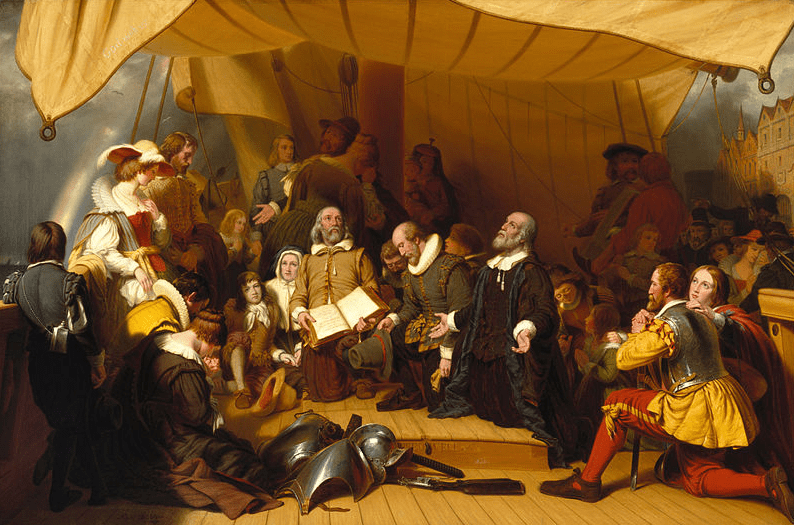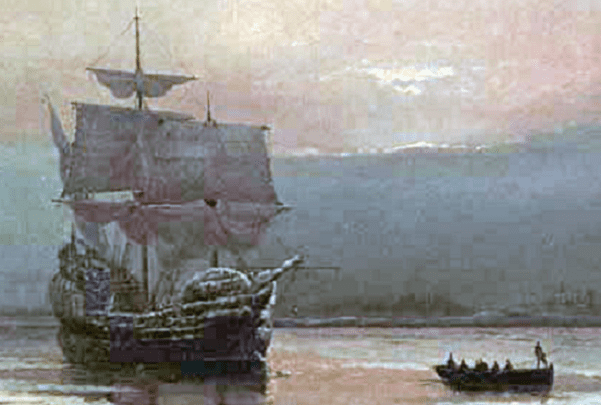With everything going on in the world today, it is sometimes easy to forget your roots. Even though we are taught American history in school, the story of the famed Pilgrims might have faded in your memory. So, why did the Pilgrims come to America? Who were they? How did they survive?

The Puritans and the Separatists
Until 1534, England was a Roman Catholic nation. King Henry VIII was the one to make the shift to what he called the Church of England, thereby the new national church. Some English people saw this new church as too similar to the Roman Catholic church, and therefore wanted to return to something simpler, more “pure.” Thus, the Puritans were born.
The Puritans called for a church that harkened back to simpler, less-structured forms of worship. And while some simply wanted a reformation of the Church of England, others decided to go even farther.
The Separatists were Puritans who wanted to break off from the Church of England to form separate congregations that worshipped differently. This was illegal at the time, making their position dangerous and even life-threatening. The persecution they faced in England soon pushed them to flee to… the Netherlands, actually.
Surprised? Many people forget this vital bit of history. The initial story of the Pilgrims is a bit more involved than most people remember.
The Separatists in the Netherlands
Wait, so the Pilgrims were in the Netherlands first? Yep! You may be wondering: if they were free to practice their religion there, then why did the Pilgrims come to America?
Unfortunately, life in the Netherlands turned out to be quite difficult for the Pilgrims. Here are some of the many reasons why:
- It was difficult for the English Separatists to adapt to the new language and culture.
- Because they left in haste, the Separatists had no real financial preparations. They did not have the means to truly support themselves.
- Many had to leave their family and friends, not to mention their homeland, which took an emotional toll on the Separatists.
- While many found work as carpenters, printers, tailors, and cloth traders, they still had to work incredibly hard. Even children had to work to contribute.
- The children that grew up in the Netherlands began leaving their families to become sailors and soldiers, worrying the Separatists that their youth was losing their English identity.
- They feared another war would break out between the Spanish and the Dutch, putting them in even graver danger.
The Journey to America
So, what year did the Pilgrims come to America? Even though their livelihood in the Netherlands wasn’t entirely comfortable, it took the Pilgrims about 11 to 12 years to finally decide to move. The means to that move? You guessed it, the famous Mayflower. This ship set off in 1620 and arrived in America in about 65 grueling days.
How many people were on the Mayflower? With over 100 people on board, several animals – and a ship designed for cargo, not people – this journey was by no means an easy one. Not only were there several storms that almost destroyed the ship, but two people died on the journey. There was also a baby born on board. That baby was named Oceanus, quite appropriately.
How to Uncover Additional Information on the Pilgrims
Every once in a while, you stumble on a gold mine. Pirates, meet your treasure: William Bradford’s journal.
One of the leaders who founded Plymouth Colony, William Bradford, did more than participate in the journey: he also documented it.
William Bradford’s Journal
Of Plymouth Plantation is Bradford’s detailed, 270-page manuscript wherein he recorded the entire path of the Pilgrims, from their time in the Netherlands – where he was but a young man – through their harrowing trip on the Mayflower, to their daily colonial life in the New World. It was written between 1630 and 1651.
Bradford’s journal was never published during his lifetime, and it is interesting to note that the Puritans who founded Plymouth Colony in the New World did not call themselves Pilgrims. Later historians applied that term after finding a reference in Bradford’s journal in which he called the Mayflower passengers “pilgrimes.”
Arguably the first-ever American history book, Of Plymouth Plantation is now a vital source for anyone interested in discovering more about the Pilgrims and their own ancestry. Bradford even said, in the sixth chapter of his book, that he created it for that very reason: he hoped that his descendants would understand the hardships the Pilgrims went through.
To honor the memory of William Bradford and his fellow Pilgrims, here are some additional ways you can uncover and appreciate the stories of these brave settlers:
- You can search names of known ancestors and relatives to locate articles about them and their descendants in GenealogyBank’s Historical Newspaper Archives.
- Once you find new ancestors or relatives, continue to add to your online family tree. This will help you match with even more relatives, making your searches more robust and helping others connect the dots.
- Don’t just limit yourself to obituaries. Here are some of the many types of newspaper articles that will help you on your search:
- Advertisements for funeral sermons
- Marriage announcements
- Death notices
- Birth announcements
- Biographical memorials (written by professional and alumni associations)
The wonderful thing is that you are never alone in your search. As more relatives discover the truth about their genealogy, yours becomes clearer. Just keep searching and connecting, and you will soon discover the fascinating stories of your family’s past.
Could Your Ancestors Have Been One of the Pilgrims?
If you are curious whether you are related to any of the trailblazing Pilgrims, fear not: GenealogyBank has the resources for you! With more than 2 billion records to choose from, there is no telling what you can uncover.
So, get searching and find out if you are descended from the brave Pilgrims of Plymouth Colony!
Sources:
- HistoryofMassachusetts.org: Of Plymouth Plantation by William Bradford.
- Plimoth.org: Who Were the Pilgrims?
Related Articles:
